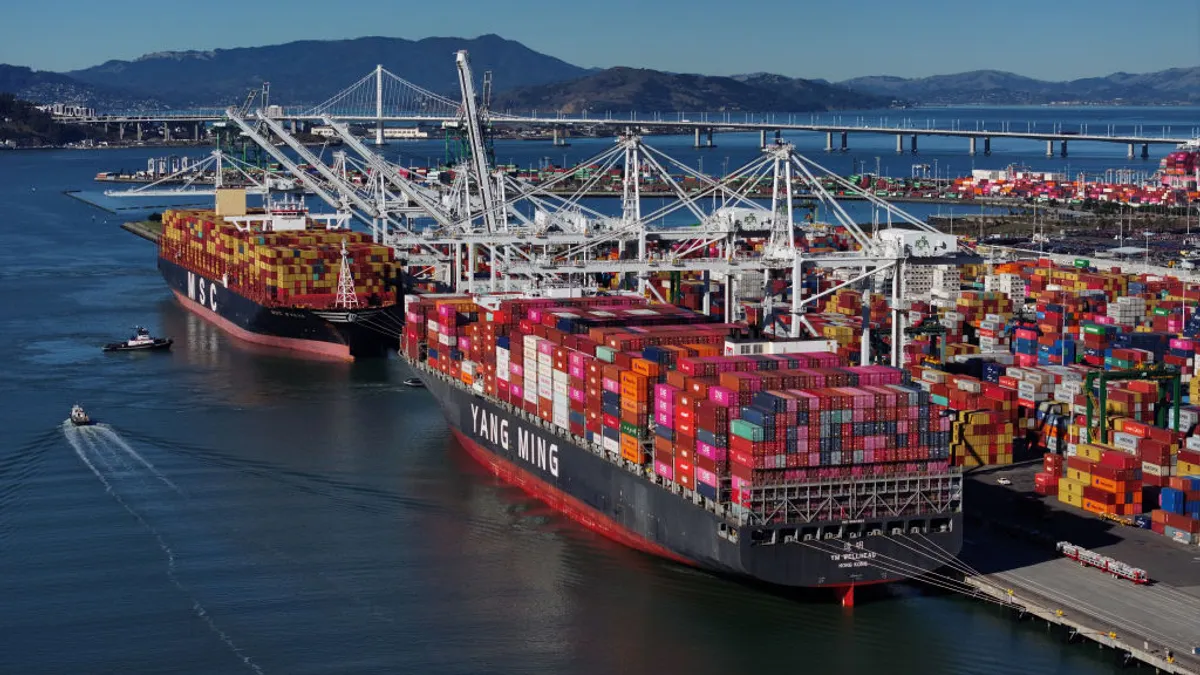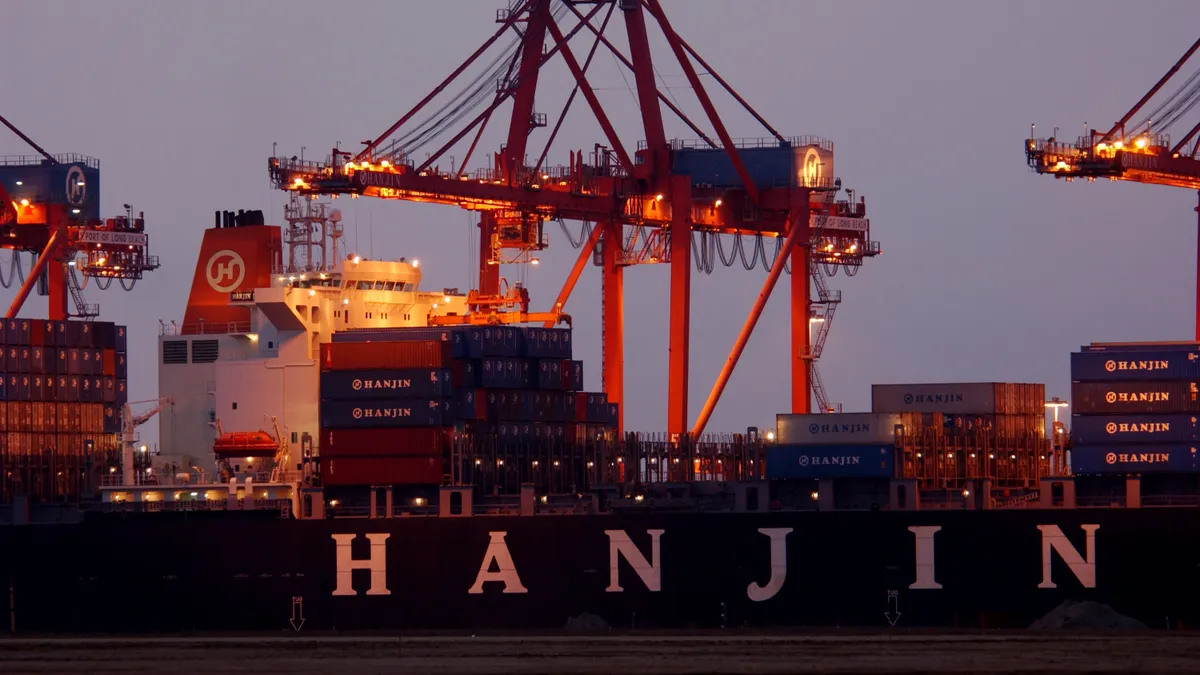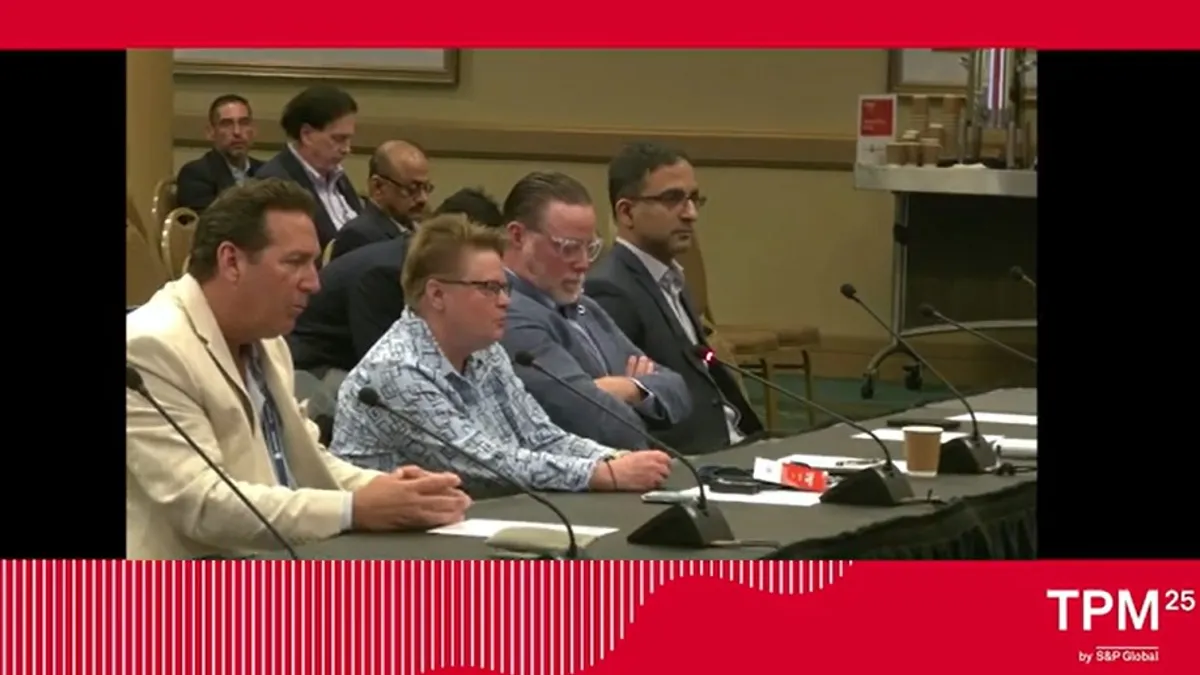The second quarter of 2019 started with a bang in logistics M&A, when DSV announced April 1 it would buy Panalpina. The Danish transportation and logistics company agreed to acquire the Swiss freight forwarder for $4.6 billion creating, by some estimates, the fourth largest freight forwarding company in the world.
Nine days later, CMA CGM closed its public tender offer and held nearly 98% of CEVA Logistics' outstanding shares.
The deals left many analysts wondering if this was the beginning of another wave of consolidation in logistics and transportation, with parallels to the consolidation the ocean freight industry underwent three years ago.
But since April, logistics M&A has stayed fairly quiet.
"It's not as hot as it was a couple years ago," Mike Nayden, logistics and distribution leader at Deloitte, told Supply Chain Dive. He said the height of transactions (in purchase size and number of deals) in transportation and freight forwarding came in 2017.
The following year remained active but slower than 2017. And in the first half of 2019, "that slowing down trend has continued," Nayden said.
The 2019 M&A slowdown
Data from PwC shows deal value and volumes fell in Q1 2019 compared to previous quarters. Not a single megadeal, defined by PwC as $5 billion or greater, was announced in the first quarter. PwC data on Q2 is not yet available.
Nayden expects big declines in M&A activity in ocean and air transportation, particularly because the industries underwent a great deal of consolidation in 2017 and 2018.
Maersk announced plans to acquire Hamburg Süd in late 2016 and completed the $4.4 billion transaction the next year. K Line, MOL and NYK merged to form Ocean Network Express (ONE) in 2017. Hapag-Lloyd merged with UASC. COSCO got the green light from Chinese regulators last summer to acquire OOCL for $6.3 billion.
With the top 10 ocean carriers now in control of 83% of total market share, further M&A would likely draw scrutiny from anti-trust regulators.
Nayden said the exception to the declining M&A trend is in the highly fragmented trucking industry, especially in North America.
"The industry is still very hot," he said in reference to M&A in trucking. "I would say that's almost on a tick up."
Who might buy?
Frequent megadeals may not be in the cards, but the logistics industry as a whole remains fragmented and ripe for mergers and acquisitions, according to Cathy Morrow Roberson, founder and head analyst at Logistics Trends & Insights.
"There's a lot of mom and pop, there's a lot of the big guys, and then there's the in-betweens, and so consolidation has always been needed," she told Supply Chain Dive.
"I still do think there's some very serious big players out there that are looking to combine together."

Mike Nayden
Logistics and Distribution Leader, Deloitte
Agility, ranked 26th in global 3PLs by Armstrong & Associates, was previously in merger talks with Panalpina (ranked 16), before the DSV acquisition. Roberson said there's a good chance Agility is still eager to play the M&A game.
"I see Agility buying something within the next couple of years," she said. "They've always had a big focus on the emerging market."
The intermediaries of the supply chain, such as forwarders and 3PLs, may be more likely than carriers to merge, given the sheer number of players in the industries.
"I still do think there's some very serious big players out there that are looking to combine together," Nayden said, without naming specific names.
Growing niche offerings with M&A
Carriers may look to acquire smaller companies that expand a particular, sometimes niche, service offering. Cold chain is a particular specialty, with demand for this type of supply chain growing alongside e-commerce and online grocery.
"Panalpina has made specific acquisitions in cold chain, as has Kuehne + Nagel," Roberson said. Panalpina last year acquired Newport Cargo, an Argentina-based provider of logistics and air freight services, which the Swiss company said "added tremendous value" to its perishables network. This year, Panalpina acquired CargoMaster, another South American company specialized in air freight export of perishables.
Logistics acquisitions often target high margin verticals, such as healthcare and pharmaceutical logistics, Talon Custer, equity research analyst in transportation and logistics at Bloomberg Intelligence, told Supply Chain Dive. Kuehne + Nagel acquired Quick International Courier with the specific focus of growing expertise in time-critical shipments in pharma and healthcare.
Nayden gave the theoretical example of a trucking carrier with strong box truck capabilities which may look to acquire a company with reefer specialties, helping it appeal to shippers in the food industry.
Growing such a capability — or any other specialized service — organically "is just too slow," Nayden said, driving a carrier toward acquisition instead.
Earlier this year, JB Hunt acquired Cory, a provider focused specifically on large-format last-mile deliveries.
Maersk in recent months has divested and spun off some parts of its business while acquiring others to expand its end-to-end supply chain offerings, including customs broker Vandegrift. CMA CGM has also focused on acquisitions that amplify services, such as its purchase of Containerships, a European transportation provider, and CEVA.
Canadian National Railway in May acquired the intermodal division of H&R Transport, a Canadian logistics provider specialized in temperature-controlled and intermodal freight. Weeks before, CN closed its acquisition of trucking firm TransX. The railroad's CEO has openly answered questions on earnings calls about future acquisitions, noting he is open to buys that add volume and "feed the beast."
Who's not buying?
While acquisitions can strategically help a company expand its offerings, such transactions often take time to navigate. In this sense, acquisitions aren't a good move for a company looking to move quickly, said Peter Tirschwell, vice president of maritime and trade at IHS Markit.
"Large scale M&A in this regard will slow them down," he told Supply Chain Dive in an email. "Time spent integrating is time not spent innovating."
Acquisitions also come with large upfront costs and financial burden that often requires several quarters for recovery. Roberson said uncertainty in the economy and global trade means logistics providers are focused on margins and hesitant to take on additional debt — even if the purchases mean long-term gains.
"Time spent integrating is time not spent innovating."

Peter Tirschwell
Vice President of Maritime and Trade, IHS Markit
XPO Logistics grew rapidly through acquisitions, but the provider changed its tune this March when it terminated its Chief Operating Officer Kenneth Wagers. At the time, an XPO spokesperson said Wagers was originally hired to work with the company's president "in anticipation of significant M&A activity." XPO instead decided to do a stock buyback rather than continue on the acquisition trail.
This March, Deutsche Post CEO Frank Appel told The Wall Street Journal DHL doesn't have plans to become active in M&A. "We are still the largest ... so we think it’s better to focus on ourselves," he said. DHL Supply Chain is the largest 3PL according to Armstrong & Associates, with $27.6 billion in gross revenue in 2017. The second largest is Kuehne + Nagel, with 2017 revenue at $22.6 billion.






















